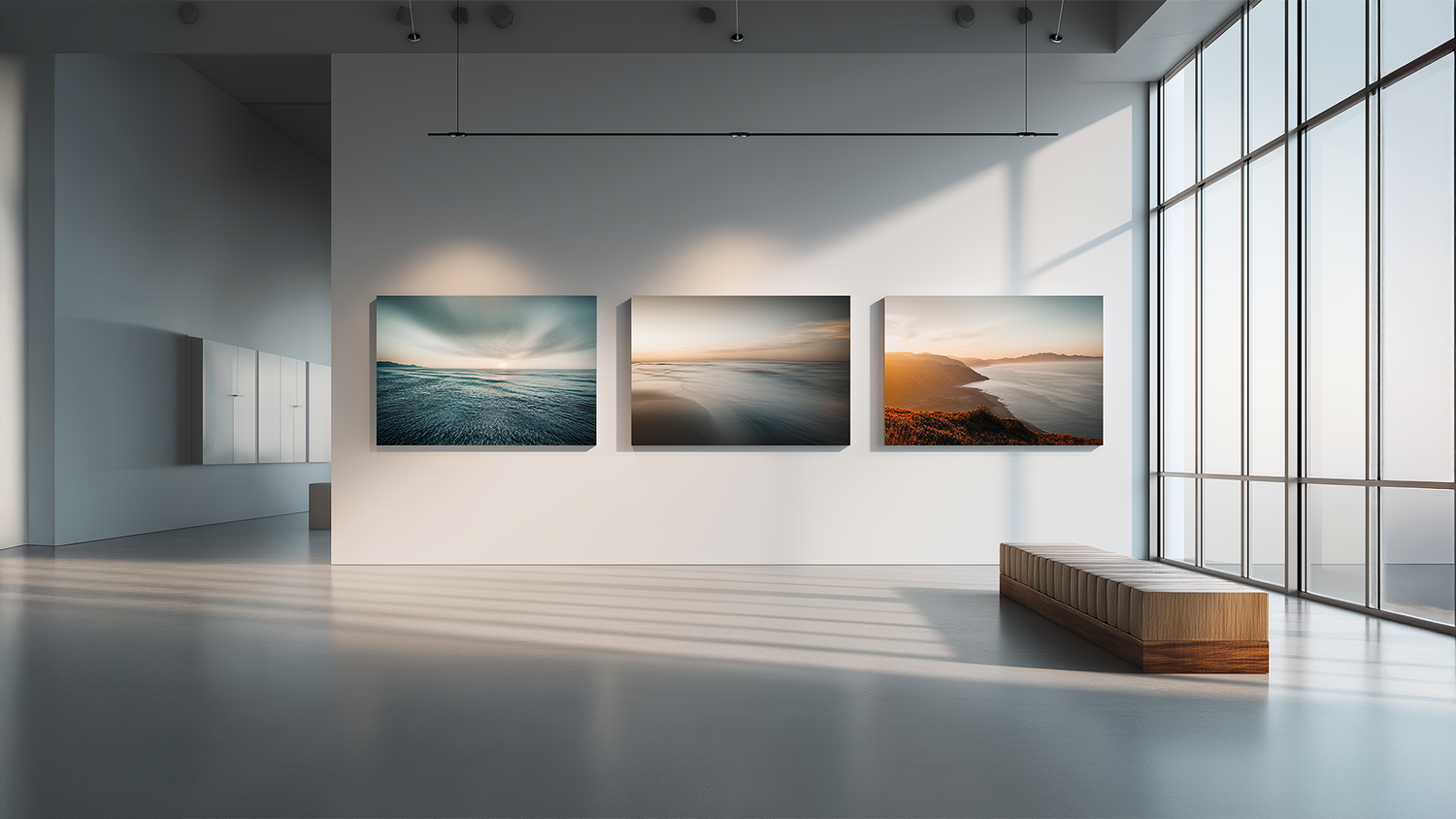As a professional photographer, you know that a great photo is more than just a single image - it's part of a larger story. When preparing for an exhibition or a client portfolio, the way you present your work is just as important as the quality of the photos themselves. The art of curating and sequencing your images is a powerful tool that can transform a collection of great shots into a cohesive, impactful narrative. It’s about creating an experience for the viewer, guiding them on a journey that reveals your unique vision and tells a compelling story.
Beyond the Gallery Wall: The Psychology of Photo Sequencing
Think of your exhibition space or portfolio as a book, and each photo as a page. You wouldn’t just scatter the pages randomly; you’d arrange them to build a plot and create a rhythm. This deliberate arrangement is what professionals call sequencing. It’s a subtle but powerful way to influence how your audience feels and thinks as they view your work.
The goal is to create a flow that feels natural and intentional. You want to avoid a cluttered, chaotic feel and instead lead the viewer from one image to the next. A well-sequenced collection can build tension, create a sense of harmony, or tell a chronological story. It's the difference between a collection of individual pieces and a unified work of art.

Three Pro Strategies for Curating a Cohesive Series
There is no single "right" way to sequence photos, but there are proven strategies that can help you find your narrative. Start by defining the story you want to tell and the emotions you want to evoke. Then, consider these three professional approaches.
1. Thematic Sequencing: Building a Visual Motif
This is one of the most common and effective methods. Instead of following a chronological order, you group images based on a shared theme, mood, or color palette. For example, you might create a series that focuses on the color red, or one that explores the theme of solitude. This approach creates a strong sense of unity and helps viewers understand your artistic intent.
Pro Tip: Look for visual echoes. Do two different photos have a similar line, shape, or texture? Placing these images near each other creates a powerful visual connection that deepens the viewer's experience.
2. Chronological Sequencing: Telling a Story in Time
If your work documents a specific event, a project, or a journey, a chronological sequence is often the most logical and powerful choice. This method allows the viewer to follow a narrative from beginning to end, creating a clear sense of progress and development. This is particularly effective for photojournalism, documentary work, or a long-term personal project.
Pro Tip: Don't be afraid to break the chronological flow for a single, impactful image. A well-placed "climax" photo can serve as a powerful punctuation mark in your story, demanding attention and leaving a lasting impression.
3. Contrast and Juxtaposition: The Power of Opposition
This strategy is about creating a dialogue between images by placing them side-by-side to highlight their differences. Juxtaposing a photo of an empty street with a crowded one, or a calm portrait with a chaotic landscape, can create a dynamic tension that makes each image more compelling. This is an advanced technique that can be incredibly rewarding, forcing the viewer to engage with your work on a deeper, more intellectual level.
Pro Tip: Use visual contrast to your advantage. Try pairing a dark, moody image with a bright, airy one to amplify the emotional impact of both.

The Final Touch: Presentation Matters
Once you’ve perfected your sequence, the final presentation is what brings it all to life. The physical quality of your prints and their display can either enhance or detract from your carefully crafted narrative. This is where Xpozer's professional materials make a difference.
The frameless, floating design of our prints ensures that nothing distracts from your images, allowing the viewer's eye to move effortlessly from one piece to the next. Our high-resolution printing reveals every detail, ensuring the technical quality of each photo supports the emotional weight of your sequence. When your prints look professional and polished, it adds a layer of authority to your work, showing clients and collectors that you are a serious artist who pays attention to every detail.
Ready to Tell Your Story?
Don’t let your incredible photos get lost in a messy presentation. Elevate your portfolio and exhibitions with gallery-quality prints that honor your artistic vision.



